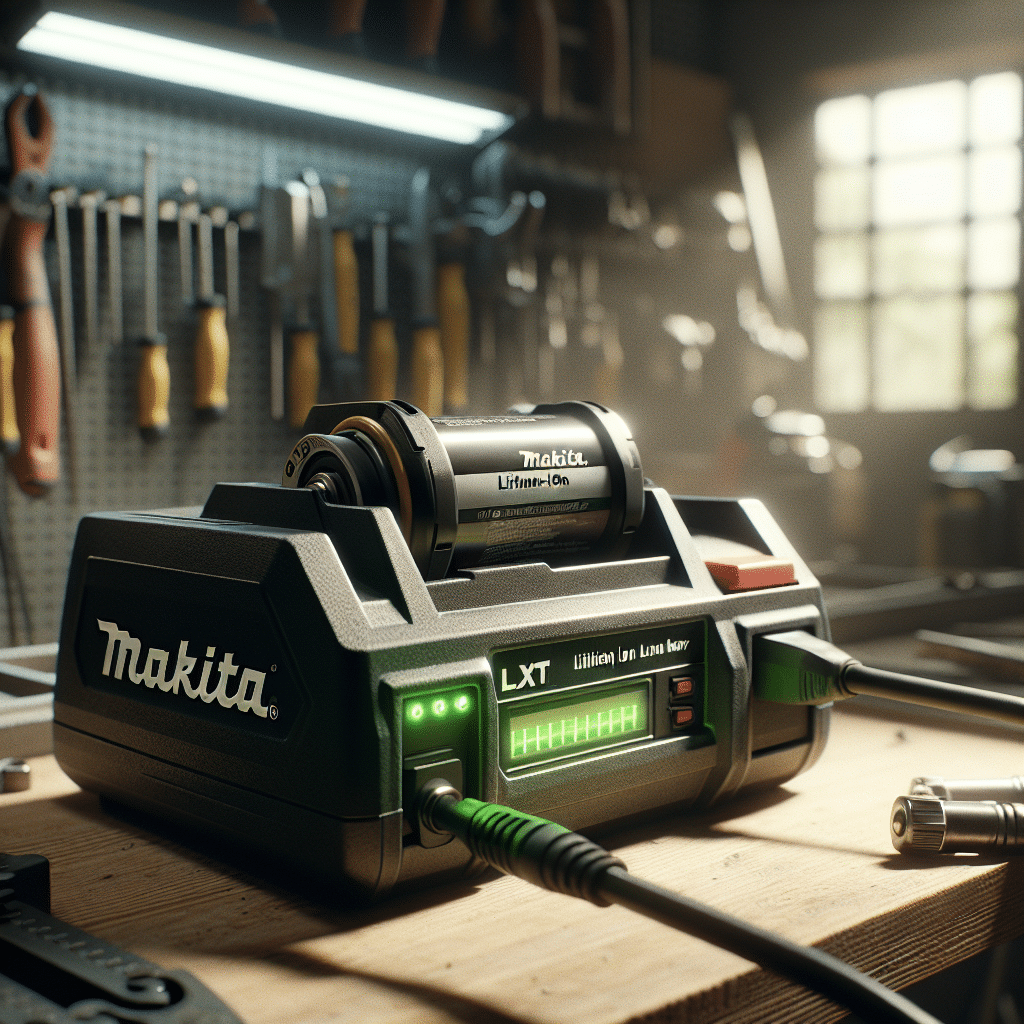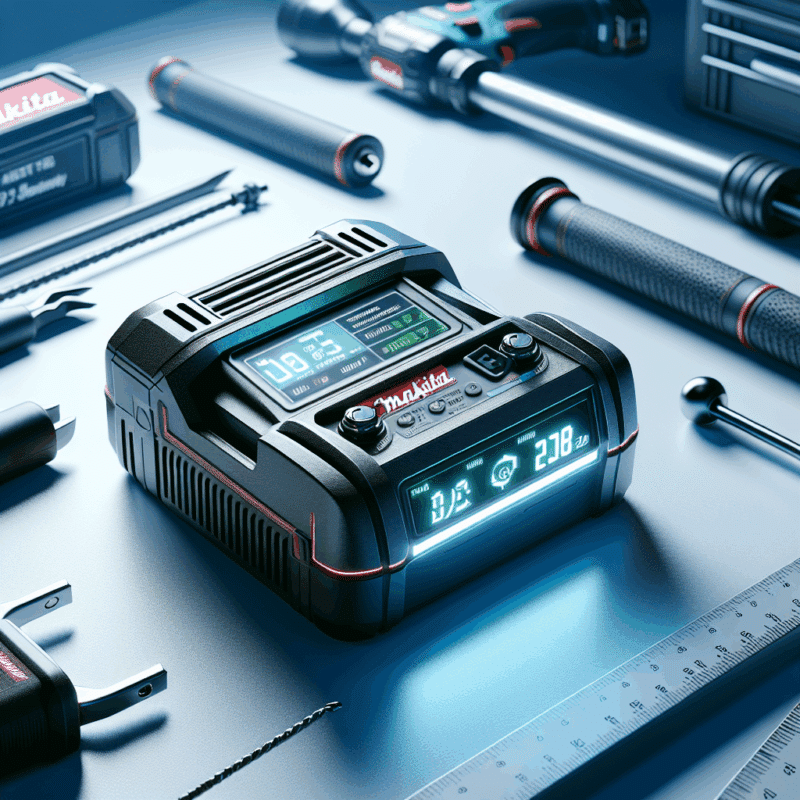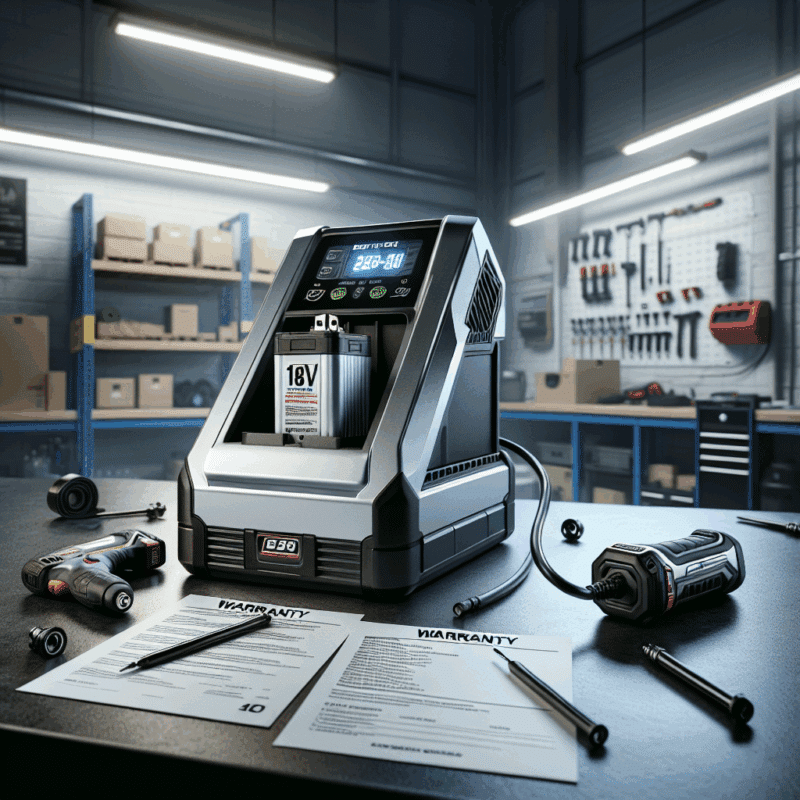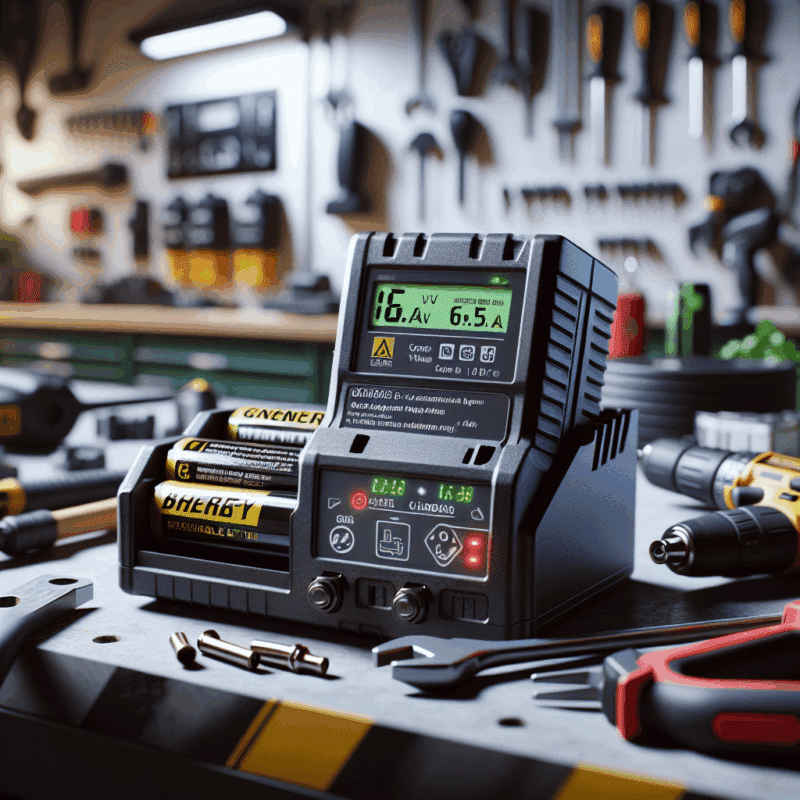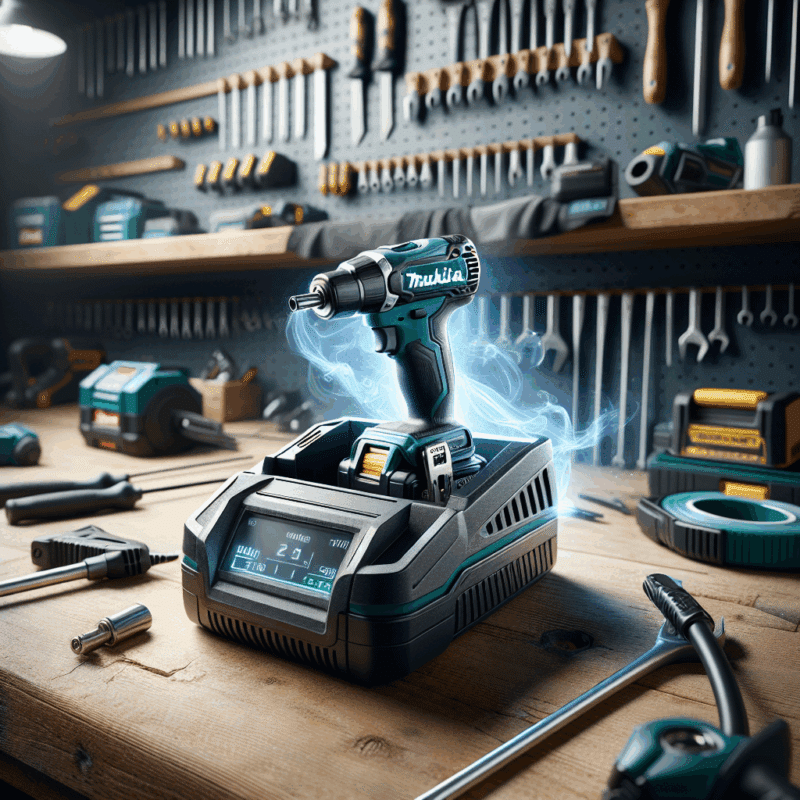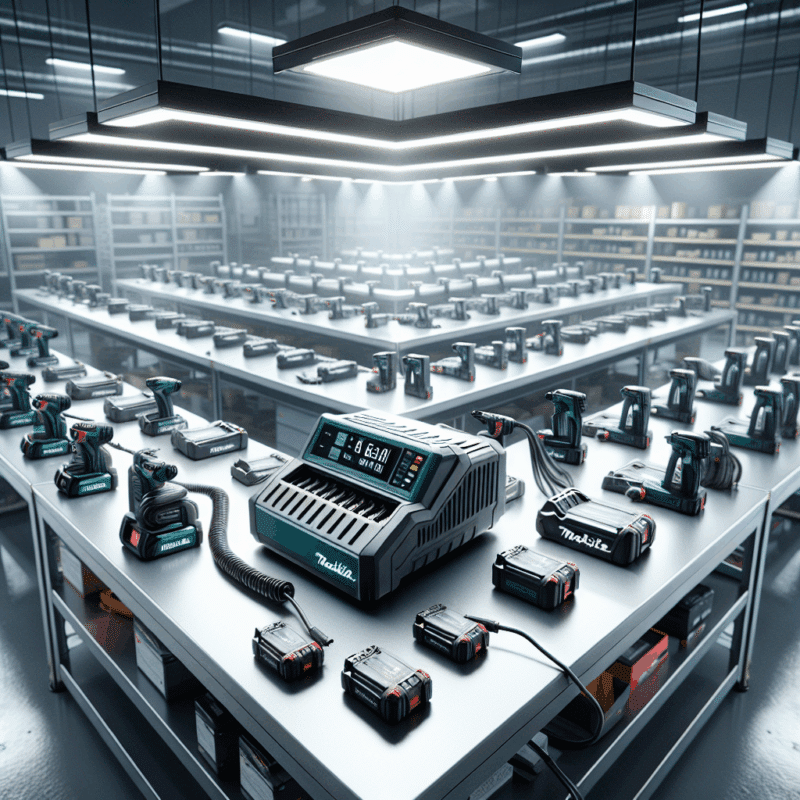Unlock Maximum Runtime: Fast Charging Makita LXT Batteries Guide
In This Article
- Use Makita-approved chargers for safety and battery longevity.
- Choose rapid charging for urgent tasks and standard charging for overnight cycles.
- Keep batteries cool by avoiding high temperature environments during charging.
- Store batteries at 40–60% charge for long-term downtime.
- Avoid over-discharge; recharge before batteries reach 20% capacity.
- Inspect both batteries and chargers regularly for signs of wear or damage.
- Rotate battery usage to balance ageing across your fleet.
- Use only CE-certified third-party chargers if genuine ones are unavailable.
The Importance of Efficient Battery Charging
Why Makita LXT Batteries Require Special Attention
The Makita LXT battery series represents a cornerstone in the cordless power tool industry, particularly among tradespeople and DIY enthusiasts across the UK. Integrating lithium-ion technology, the Makita LXT battery system delivers not only high power output but also consistently long runtimes, lightweight operation, and impressive durability. However, to unlock their full potential, efficient charging practices are essential. As power demand increases on-site, so does the reliance on high-performing batteries that can charge quickly without compromising service life.
Unlike standard batteries, a makita lxt battery relies on sophisticated electronics and thermal safeguards that necessitate specific care during the charging process. Improper handling may lead to overheating, loss of capacity, and even irreversible cell damage. Therefore, it is crucial for professionals to understand that proper charging does more than refill their battery—it ensures lasting performance in even the most demanding environments. Learning how to optimise the charging process can significantly enhance tool reliability and reduce downtime.
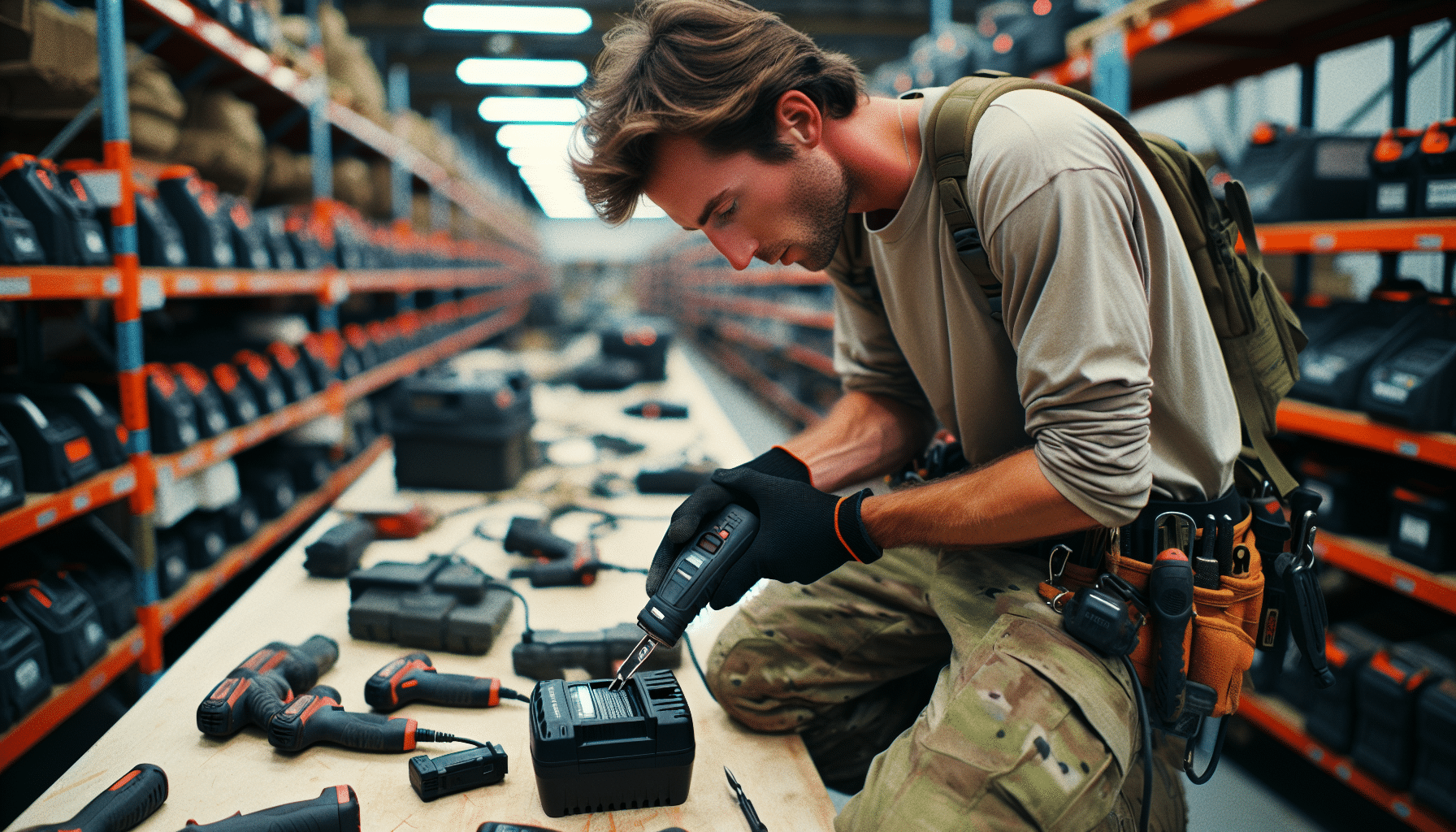
Understanding Rapid Charging vs. Standard Charging
How Charge Speed Impacts Battery Health
Many users assume faster charging is invariably better—especially when deadlines loom. While it’s true that a rapid charge can get your makita lxt battery ready in just 30 minutes, there’s more to consider. Rapid chargers deliver higher current to recharge batteries quickly, but this introduces additional heat, which can accelerate cell wear if not adequately managed. By contrast, standard charging occurs at lower currents, generating less heat and contributing to better long-term health of the battery cells.
The internal battery management system (BMS) built into a Makita LXT battery plays a vital role in regulating voltage, temperature, and overall charge cycles. An uncontrolled or poor-quality charging source may bypass these protections, causing stress that shortens the battery’s usable lifespan. Therefore, tool users must assess their daily requirements: is speed paramount, or is battery longevity more critical? Understanding the differences can shape smarter charging decisions that extend battery performance over time.
Best Practices for Charging Makita LXT Batteries
Expert Tips to Maintain Longevity While Charging Fast
To effectively extend the lifespan of any makita lxt battery, adherence to proven charging practices is essential. First and foremost, always use Makita-approved chargers. These are designed to communicate with the battery’s onboard chipset, ensuring optimal current regulation and thermal protection. Avoid exposing batteries to extreme temperatures during charging; ideally, charge in an environment between 10°C and 30°C.
Another key practice is to avoid deep discharges where possible. Running your battery entirely flat before every recharge may seem convenient, but it can degrade the internal cells far quicker than partial recharges. Instead, aim to recharge before the battery drops below 20% capacity. Following this habit can significantly extend the overall lifecycle.
Additionally, store batteries with a medium charge if they will not be used for an extended period, especially between jobs or over weekends. Preventing full depletion and overcharging during storage conditions will reduce stress on the battery’s chemistry, keeping it efficient for longer.
Choosing the Right Charger for Maximum Efficiency
Top Makita-Compatible Rapid Chargers in the UK
The charger you select can directly impact the performance of your makita lxt battery. Makita offers various rapid chargers tailored to different voltage ratings and battery capacities. The most popular model, Makita DC18RC, is compatible with all 18V LXT lithium-ion batteries. It features a built-in fan that cools the battery during charging, which contributes to both faster charge times and extended battery life.
For even greater productivity, the Makita DC18RD dual-port charger is an excellent choice. It charges two batteries simultaneously, making it ideal for professionals operating multiple tools throughout the day. Additionally, the DC18RD is smart-enabled, displaying status indicators and implementing advanced charging algorithms designed to maximise each battery’s output.
If you are considering third-party chargers, ensure they are certified and fully compatible with the LXT system. Uncertified units may lack the proprietary communication required to correctly manage the battery’s voltage thresholds. For further comparison of charger options, read more on Learn more about Power Tool Battery Optimisation & Charging and Unlock rapid charge features for devices.
How to Keep Your Battery Cool During Charging
Temperature Factors that Affect Battery Life
Overheating is one of the leading contributors to shortened lithium-ion battery life. Every makita lxt battery contains integrated thermal sensors, but even these cannot compensate for improper environment selection during charging. High ambient temperatures combined with rapid charging rates can cause the battery to exceed optimal thermal limits.
To mitigate this risk, always charge on a flat, non-conductive surface in a well-ventilated area. Avoid charging immediately after finishing heavy-duty tasks—excess residual heat from tool usage can accumulate during charging and trigger thermal throttling. Where applicable, use chargers with built-in fans like the DC18RC or DC18RD, which actively cool the battery.
Thermal management is not just a precaution—it is a strategy. Longevity and performance of your makita lxt battery are directly proportional to how frequently it experiences temperature extremes. By regulating heat, you not only protect internal components but also ensure consistent run-times with every cycle.
Common Charging Mistakes and How to Avoid Them
Prolong Runtime by Eliminating Charge Cycle Errors
Despite their advanced engineering, makita lxt batteries are susceptible to user error. One of the most frequent mistakes is leaving batteries on the charger long after reaching full charge. Although most Makita chargers have auto shut-off features, leaving batteries connected unnecessarily increases exposure to residual heat and may promote cell imbalance over time.
Another common issue is using damaged or counterfeit chargers. These often fail to deliver consistent voltage, resulting in irregular charge cycles that can dramatically reduce capacity. Always inspect chargers for frayed cables, exposed wiring, or erratic LED behaviour. Additionally, avoid charging frozen batteries—this can cause internal cracks that permanently impair functionality.
Routinely inspect thermistors and casing integrity as part of your maintenance regimen to avoid operational surprises. Practising awareness is the simplest route to extended performance. To learn more about maintenance tasks, explore Read a related article and Explore SEO automation versus traditional tools.
Charge Cycle Strategies for Daily Tool Use
Balancing Fast Charges and Long-Term Performance
For contractors and tradespeople in the UK, having a ready-to-go makita lxt battery portfolio is essential. Strategic cycling helps balance immediate productivity and long-term battery health. One useful tactic is rotational charging—channel new batteries into harder workloads while assigning older units to light-duty tasks. This evens wear across your battery fleet.
It’s also advisable to stagger charges throughout the day rather than charging all units simultaneously. This not only reduces electrical load but allows for progressive cooling and improved energy efficiency. Planning your workday around your recharge window can make a material difference in overall tool uptime.
Moreover, consider installing a backup power source or generator in mobile operations. Continuous access to reliable power ensures safe charging intervals, even in remote UK locations. Consistency is key; disciplined rotation and charging timing yield long-term gains in both performance and cost savings.
When to Use Rapid Charging vs. Standard Charging
A Guide for On-Site and Workshop Scenarios
Understanding when to employ rapid or standard charging can extend the value derived from your makita lxt battery system. Rapid charging is best suited for high-paced jobsites where downtime is costly. Time-sensitive environments like roofing, framing, or emergency repair benefit from the swift turnaround provided by rapid charge units such as the DC18RC.
In a workshop or overnight context, however, standard charging is the superior choice. Lower-current systems deliver more balanced thermal output and reduce cellular fatigue. Over time, this translates into greater cycle life and sustained capacity. In fact, many UK contractors configure dual stations—one rapid charger for fieldwork and one conventional charger for overnight refresh cycles.
Switching between fast and regular chargers depending on operational context is a powerful way to control costs without compromising performance. Evaluate your typical workload and structure your charging stations accordingly for optimal outcomes.
Third-Party vs. Genuine Makita Chargers
Pros, Cons, and Safety Tips
While it may be tempting to save money with third-party chargers, the risks must be clearly understood. Genuine Makita chargers are built to exact specifications, ensuring safe interaction with the internal microcontroller of each makita lxt battery. They feature overheat protection, cell balancing, and other safeguards certified for UK compliance standards.
Conversely, third-party options—though functional—may lack compatibility with advanced features such as rapid cooling or smart charging indicators. Some may even bypass Makita’s thermal cut-offs entirely. If you do choose an off-brand charger, ensure it bears CE certification and has positive, verified reviews from UK buyers.
Ultimately, price should not eclipse protection. Investing in original Makita accessories is a long-term decision that protects your battery stock, reduces downtime, and ensures every charge cycle counts.
Real-World Scenarios from UK Contractors
Field Examples: Runtime Before and After Charger Upgrade
To appreciate the real value of efficient charging, consider testimonials from UK-based tradespeople. For instance, a Nottingham-based electrician reported a 20% increase in daily output after upgrading to a DC18RD charger. The ability to rapidly alternate between multiple fully charged makita lxt batteries greatly streamlined his workflow.
Another example comes from Surrey, where a carpentry team reduced their battery replacement frequency by 30% over 12 months following a transition from passive, generic chargers to authentic Makita rapid models. They attributed the reduced depletion to balanced charge cycles and improved thermal regulation.
These stories underscore a simple truth: charging isn’t just maintenance—it’s performance strategy. With the right tools and practices, UK professionals can extract full value from their makita lxt battery investment, job after job.
Conclusion: Your Charging Checklist to Maximise Runtime
For those leveraging the power of Makita cordless tools, understanding how to care for your batteries is not an option—it’s a necessity. By mastering the principles of standard and rapid charging, avoiding common pitfalls, and investing in the right accessories, you extend not only runtime but also the longevity of your makita lxt battery fleet.
Charging, when optimised, becomes a tactical advantage on any UK job site. Adopt thermal management strategies, balance your cycle timing, and always put safety first by using compliant chargers. When properly charged, your batteries can serve you reliably for years, maintaining maximum productivity with minimal loss in power.
Great guide on unlock-maximum-runtime-fast-charging-makita-lxt-batteries – Community Feedback
How can I charge Makita LXT batteries faster without damaging them?
Use a Makita-compatible rapid charger, avoid overheating, and charge batteries at moderate ambient temperatures. Always follow manufacturer safety guidelines and avoid consistently charging to 100% if you want to maximise long-term health.
Does fast charging reduce the lifespan of Makita LXT batteries?
Occasional fast charging is safe, but frequent rapid charge cycles at high temperatures may reduce longevity. Alternate with standard charging and maintain proper battery care for the best balance of speed and life.
Which rapid chargers are compatible with Makita LXT batteries in the UK?
Makita-branded rapid chargers and quality third-party units like the TorxupVoltGuard 6500 are compatible. Ensure the charger is designed for 18V LXT lithium-ion batteries and carries UK safety certifications.

